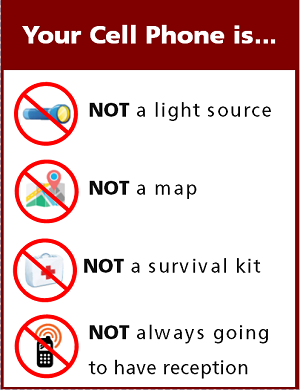From FEMA:
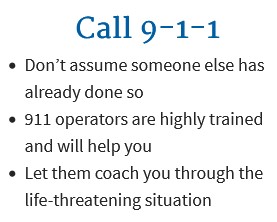
(This next paragraph is from the Red Cross.)
“Recognizing and Responding to an Emergency
In an emergency, there are four actions you can take to make a difference in the outcome for an injured or ill person:
o Recognize that an emergency exists.
o Decide to take action.
o Activate the emergency medical services (EMS) system.
o Give care consistent with your knowledge and training until EMS personnel arrive and take over.”
– – – – – – – – – – – – – – – – – – – – – – – – – – – – – – – – – – – – – – – – – – – – – – – – – – – – – – – – – –
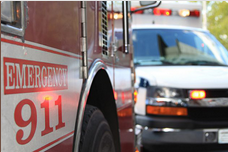
Most of the time you activate the emergency medical services (EMS) system
by calling 9-1-1 or the designated emergency number for any life-threatening condition.
Life-threatening conditions include, but are not limited to
■ Unresponsiveness
■ An altered level of consciousness (LOC), such as confusion
■ Breathing problems (trouble breathing or no breathing)
■ Severe external bleeding (bleeding that spurts or gushes steadily from a wound), or vomiting blood or passing blood
■ Signs or symptoms of life-threatening medical conditions, such as heart attack or stroke
■ Severe (critical) burns
■ Suspected or obvious injuries to the head, neck or spine
■ Suspected or obvious broken bone
■ Suspected poisoning that appears to be life threatening
■ Seizures (but not all seizures)
■ High fever in young children and infants
■ Vomiting, diarrhea and dehydration in young children and infants

The person who makes the call should be prepared to give the dispatcher (sometimes referred to as “the call taker,” or “telecommunicator”) information listed below. And please note that if you do not have all these answers, you should call right away without trying to get all the answers.
For example, you might start by saying: “we have an adult who is having a stroke,” or “a child fell off their bike and is bleeding heavily,” or “we have an adult who is choking,”
then answer the dispatchers’ questions.
Let the dispatcher ask you the questions in the order they need to for faster service.

Be prepared to tell the dispatcher:
—The location of the emergency (address, nearby intersections or landmarks, and location within the building).
Note that not all land-line phone systems let the dispatcher know the address you are calling from.
Some places it could be good to have a description posted next to each phone, such as:
“We are in the second two story building from the main entrance to the company from 1234 Main street, on the north-west corner of the building, downstairs.”
or
“The pool complex is located on the east side of the campus, take the Stelling Road entrance and go to the far side of the parking garage.”
—The nature of the emergency, for example, whether police, fire or medical assistance is needed.
and sometimes, whether beyond-the-usual-help is needed
(example: is there a victim trapped in their car – the doors can’t be opened due to damage to the car)
— A (brief) description of what happened
— The number of injured or ill people
— What, if any, help has been given so far and by whom
— and sometimes, the telephone number of the phone being used.
DO NOT HANG UP UNTIL THE 911 DISPATCHER TELLS YOU THEY HAVE ALL THE INFO THEY NEED.
If you call from a cell phone, you can put your call on speaker phone, then anyone helping you with the first aid (and the injured person as well), can hear what the dispatcher is saying. If the victim speaks a different language than you, the dispatcher might be able to get a translator on the call and you and the victim and the translator can all hear and understand each other.
The California Office of Emergency Services notes that: “Remember, the call-taker’s questions are important to get the right kind of help to you quickly. Be prepared to follow any instructions the call-taker gives you. Many 911 centers can tell you exactly what to do until help arrives, such as providing step-by-step instructions to aid someone who is choking or needs first aid or CPR, or if the person calling 911 has no previous CPR or First Aid training, the telecommunicator/ call-taker might start by asking “does the patient respond to you when you talk to them or touch them?”
Do not hang up until the call-taker instructs you to.
If you dial 911 by mistake, or if a child in your home dials 911 when no emergency exists, do not hang up—that could make 911 officials think that an emergency exists, and possibly send responders to your location. Instead, simply explain to the call-taker what happened.”
(Please note that the following applies to children old enough and capable enough to do the call, not to every child.)
“Be sure all children in your home know what 911 is, how to dial from your home and cell phone, and to trust the 911 call taker. Make sure your child is physically able to reach at least one phone in your home. When calling 911 your child needs to know their name, parent’s name, telephone number, and most importantly their address. Tell them to answer all the call takers questions and to stay on the phone until instructed to hang up.”
When you call 911 from a land line telephone, such as in your house or where you work, you get dispatch for the city the phone (your house/business) is located in. When you call 911 from a cell phone in almost all cases you get the Highway Patrol at a central location. Sometimes, especially if you are not calling about something on the freeway/highway, it would be faster to get dispatch for the specific city the problem is happening in. This requires knowing the direct dial phone number – area code and the seven digit phone number for each dispatch.
Direct dial emergency phone numbers for most cities in Santa Clara County, California, can be found at the Santa Clara County ARES/RACES (Amateur Radio Emergency Services/Radio Amateur Civil Emergency Services) website.
http://www.scc-ares-races.org/SCCoEmergencyNumbers.pdf
When you are planning a camping trip, try to get the direct dial number for the park/Sheriff or agency in charge before you go.
At a hotel, be sure to find out if you need to dial 911 or 9-911 or 8-911 or . . .
In a lot of Canada you can dial 911 in an emergency just like in the U.S. But in other countries it’s often a different number. See this list from the U.S. Department of State and double check when you get there:
https://travel.state.gov/content/dam/students-abroad/pdfs/911_ABROAD.pdf
And note that in many other countries, when you call their emergency services (911 or 999 or 112 or a local number or ___ ) it does not necessarily mean an ambulance will be dispatched. The emergency services operator decides what’s appropriate, talking you through your own first aid, or sending you to your doctor or sending an EMT with or without an ambulance.
Many businesses and schools have a separate phone number to call, to not only get emergency medical services, but also to notify security.
On campus , we can activate the emergency medical services (EMS) system (call for help) in more than one way.
We can use the phone in a classroom to call security at 5555 (non-emergency) or 911 (emergency).
If the land line phone (usually on a wall in a classroom) is not functioning, or if you are elsewhere on campus, De Anza emergency can be directly dialed from a cell phone at 1 (408) 924 8000.
Cupertino police/sheriff/fire can be direct dialed from a cell phone at: 1 (408) 299-2311.
Use your law enforcement agency’s
emergency number to report life-threatening incidents or a crime in progress,
and use the non-emergency number for crimes that have already occurred.
– – – – – – – – – – – – – – – – – – – – – – – – – – – – – – – – – – –

City of Lafayette, Colorado answers:
“Why Shouldn’t I Just Drive the Patient Myself?
Calling 911 immediately, when you think someone is badly hurt, sick, or in danger, connects you with the whole emergency medical team—emergency dispatch operators, emergency medical technicians, paramedics, physicians, and nurses. This team is specifically trained and equipped to handle these situations.
Once on scene, paramedics and emergency medical technicians are trained and equipped to begin assessing and providing emergency medical care which can save critical time as it relates to the patient’s outcome. They are also in contact with the emergency room physician and are able to alert the hospital of the patient’s condition prior to arrival.
Driving someone to the hospital in an emergency could put you and the patient at greater risk:
• The patient’s condition could worsen without needed treatment creating potentially irreversible issues.
• Moving some patient’s could make their condition worse.
• Most individuals are not trained or equipped to safely provide emergency care.
• Driving in traffic with a person having a medical emergency in your vehicle can be distracting and dangerous to you as well as other drivers on the roadway.”

– – – – – – – – – – – – – – – – – – – – – – – – – – – – – – – – – – –
The Red Cross requests “If your wireless phone came pre-programmed with the auto-dial 9-1-1 feature turned on, turn off the feature. Do not program your phone to automatically dial 9-1-1 when one button, such as the “9” key is pressed. Unintentional 9-1-1 calls, which often occur with auto-dial keys, cause problems for emergency call centers. Lock your keypad when you’re not using your wireless phone. This action prevents automatic calls to 9-1-1.”
– – – – – – – – – – – – – – – – – – – – – – – – – – – – – – – – – – –
Advice about calling from your cell phone:
The Federal Communications Commission (FCC) has the following advice at:
https://www.fcc.gov/consumers/guides/wireless-911-service
“Tips for Making Wireless 911 Calls
When making a 911 call from a wireless phone, you should:
• Tell the emergency operator the location of the emergency right away.
• Be prepared to provide the emergency operator with your wireless phone number, so if the call gets disconnected, the emergency operator can call you back.
• Remember that many emergency operators currently lack the technical capability to receive texts, photos and videos.
• If you do not have a contract for service with a service provider and your emergency wireless call gets disconnected, you must call the emergency operator back because the operator will not have your telephone number and cannot contact you.
Also:
• Learn and use the designated number in your state for highway accidents or other non- life-threatening incidents. States often reserve specific numbers for these types of incidents. For example, “#77” is the number used for highway accidents in Virginia.
• Consider creating a contact in your wireless phone with the name “ICE” (In Case of Emergency), which will identify who you want to have notified in an emergency.
• Lock your keypad when you’re not using your wireless phone to help prevent accidental calls to 911.”
– – – – – – – – – – – – – – – – – – – – – – – – – – – – – – – – – – –
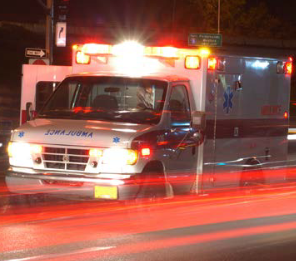
The Greater Harris County 9-1-1 Emergency Network has the following advice at:
https://www.911.org/community/9-1-1-tips/
DO NOT CALL 9-1-1
“For information
When the power is out
To report a broken fire hydrant
When your water pipes burst
To get a ride for doctor’s appointment
For paying tickets
For your pet.”
District Of Columbia Fire and EMS has this list of when to not call 911:
“• You need transportation to a doctor’s appointment
• Getting a scraped knee bandaged
• Needing a prescription to be filled
• For a sprained or twisted ankle
• For transportation to another area of the city
• Whenever the injury is not life threatening”
Washington State Department of Health says:
“In the event of a natural disaster or emergency, minimize your calls to 9-1-1 unless it is a life threatening police, medical or fire emergency. The following guide should help you determine when it is appropriate to call 9-1-1 in a disaster.
Never call 9-1-1 as a joke.
Never call 9-1-1 to ask for information.
Never call just to see if 9-1-1 is working.
Stay off the telephone unless you have a critical need to make a telephone call.
Do not call 9-1-1 unless you need emergency response from police, fire or emergency medical personnel.
If you experience other types of problems not related to these emergency services, call the appropriate telephone number for those services.”
Keep phone lines clear during emergencies
During emergencies, telephone services become overloaded. You can help keep service available for those who need it most by making only calls that are critical. Limit FAX machine and computer use as well; their use also ties up phone lines.
Other times to not call 911 can include
to obtain police reports,
you locked yourself out of your car or home,
furniture company fumbled a fully-paid-for sofa delivery,
airline lost or severely delayed your luggage,
airline or hotel or rental car agency overbooked and refused you space,
flight or cruise delayed or cancelled,
airline switches your itinerary to a less convenient route with an extended, late night, layover,
neighbor’s dog is barking (unless it is a dog trapped in a locked car on a hot day),
when a woman is going into the early stages of labor,
for someone in chronic pain who has run out of their prescription or over-the-counter painkillers,
someone who is drunk and vomiting / being sick (unless they become unconscious).
– – – – – – – – – – – – – – – – – – – – – – – – – – – – – – – – – – – – – – – – – –
Parents have mistakenly called 911 because their child got a piece of a toy stuck in their nose.
Consumers have called 911 to complain about not getting proper change at a store or about their pizza delivery not arriving or because their french fries were served cold.

Don’t always automatically stop for the person waving for help or at the ‘accident’ out in the boonies on a deserted section of road, after dark, etc. Criminals have been known to fake accidents to get Good Samaritans to stop to help them, then rob them or worse. Take a good look before you stop. It might be more prudent to make the 911 call on the cell phone, or even to get the license numbers, or at least the vehicle descriptions and drive to a gas station, rather than stopping.
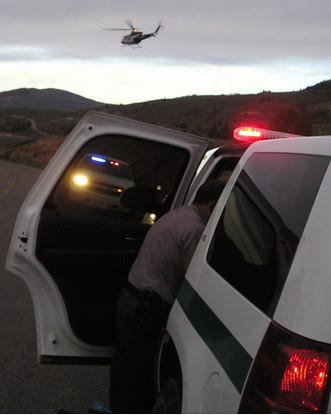
Almost all of the time, when you call from a land-line phone, the 911 dispatcher can see the address you are calling from.
But you can get help faster if you can tell the 911 dispatcher
which side of a building the ambulance or fire truck or . . . should be accessing.
or “the accident is at the northwest corner of the intersection of Stelling and McClellan”
or if you are trying to tell them which direction on a street a person of interest drove on,
(commonly referred to as the direction of travel)
you might say: “they were heading northbound on Stelling.”
Here is a basic explanation of the points of a compass ( north / east / south / west) on a map.

Almost all maps made in recent history have the direction NORTH at the top, SOUTH at the bottom, WEST on the left hand side, and EAST on the right hand side.
(As in the “west coast” and “east coast” of the United States; northern and southern California.)
Looking at a map of De Anza College, we can see that the door to classroom S56 is on the west side of the building.

The shallow end of the Olympic-sized De Anza swimming pool is named EPOOL because it is at the east end of the pool.
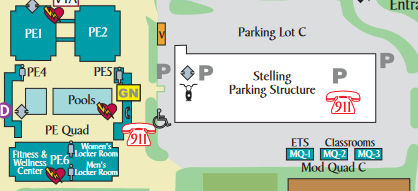
– – – – – – – – – – – – – – – – – – – – – – – – – – – – – – – – – – – – – – – – – – – – – – – – – – – – – – – – – –
Sometimes when you are calling or radioing, the person you are trying to communicate with might not be able to understand what you are saying, because your message might be scratchy.
If you just witnessed a crime or accident and really need help in a hurry, the dispatcher might not be able to understand what street intersection you are saying,
Or when talking to a relative they could ask you to repeat a word but still not understand what you said.
You could try to spell it out,
but since M and N can sound the same
AND
B,C,D,E,G,P,T and V sound much the same,
you might be misunderstood.
In the United States military, and NATO, they have a specific way to re-name each letter of the alphabet.
(Air and boat pilots, air traffic control and Ham Radio operators who volunteer with Community Emergency Response Teams know this alphabet, too. Bank and financial institutions often use it to be sure they are communicating customer info and data about large transactions properly.)
For example, if you are trying to spell out a license plate number of the car people drove off in,
instead of saying: 123 ABC,
you would say one, two, three, Alpha, Bravo, Charlie.
In the military alphabet, (also known as the radio alphabet),
here are the “words” for each letter:
Alpha = A,
Bravo = B,
Charlie = C,
Delta = D,
Echo = E,
Foxtrot = F,
Golf = G,
Hotel = H,
India, = I
Juliet = J,
Kilo =K,
Lima = L,
Mike = M,
November = N,
Oscar = O,
Papa = P,
Quebec = Q,
Romeo = R,
Sierra = S
Tango = T,
Uniform = U,
Victor = V,
Whiskey = W,
X-ray = X,
Yankee = Y,
Zulu = Z.
Exceptions include airport personnel using Dixie or David instead of Delta to not cause confusion about Delta Airlines. But this only works if all the airport personnel agree on which word starting with the letter D to consistently use.
Some police departments use more common words, such as first or last names including Adam, Baker, David, Edward, Frank or Fox, George, Henry, Lincoln, Mary, Nancy, Queen, Robert, Sam or Susan, Tom, William, Yellow or Yesterday for the letter Y, Zebra for the letter Z.
Most people do not know about the Military or police alphabets, beyond what they might have heard in a movie. And memorizing a specific alphabet is often not necessary to be able to communicate with anyone more accurately.
For example, if the sales rep you are ordering something from by phone did not repeat back to you correctly a product number you were asking about,
(you had said N17635 and when they repeated back, they said M17635)
you could say, “N, as in November,”
to almost anyone, to correct what they thought they heard.
– – – – – – – – – – – – – – – – – – – – – – – – – – – – – – – – – – – – – – – – – – – – – – – – – – – – – – – – – –

Along with making the phone call to get help, it could be good to have plans
(often referred to as an Emergency Action Plan )
for how extra people not involved in first aid
can help get the ambulance to exactly where you are.
Have you thought through which driveway will get the ambulance closest / fastest to a particular end of a large building?
Is there an exterior doorway normally locked / blocked from people using it to enter that you could have someone standing at to keep it open?
You could plan ahead to position someone at the entrance to the building and wave their arms widely in the air to get the attention of the ambulance / fire engine.
Once the EMTs and their gurney are inside, if the route to the room with the injured person is not straight ahead, you could have someone at the end of a hallway, or the bottom of a staircase pointing the direction they need to go. Would you need people at the end of long corridors / hallways to hold doors open, wave and point to another person at a corner of an interior hallway or the door to the room the victim is in?
If you have an elevator and the person who needs help is on, for example, the fourth floor, it could be good to hold the elevator on the bottom floor so the EMTs can get right on when they arrive.
Someone might need to be at a narrow stairway / hallway keeping people to one side, or even telling people to keep the stairway / hallway clear for a few minutes until the paramedics can get to the victim.
Do you have a policy about who meets EMS personnel and where? Is this carried out by security, and do you have a backup plan for an all out emergency such as after an earthquake/during a fire, when security will be quite busy and not able to respond to you?
Also in your plan:
Do you have people in your building who are unable to exit or would find it difficult to exit without help?
Do you know the number and location of fire / smoke alarms, AEDs, fire extinguishers, land-line phones, flashlights?
Number and type of locks on doors and where keys to padlocks are?
Have you taken a look at each door to be sure there is something, like a large appliance, that could shift position during an earthquake and block a door from opening? If yes, it needs to get relocated!
– – – – – – – – – – – – – – – – – – – – – – – – – – – – – – – – – – –
If a crime is involved, it is important to be able to give law enforcement a good description of the person(s), vehicles involved. By reading the following, you will have a better idea of what to look for.
Describing and Reporting of Events, Vehicles and Persons,
from NEIGHBORHOOD WATCH
“In attempting to describe events, vehicles, or persons, write down the details of what you have observed while they are still fresh in your mind, so your descriptions to law enforcement officials will be as accurate as possible.
Describing Events
When describing events, write down:
• What happened;
• When it happened;
• Where it occurred (note the nearest cross street, home address, or landmark in relationship to the event);
• Whether injuries are involved (Be prepared to report visible or suspected personal injury. Be as specific as possible—this could save a life!);
• Whether weapons are involved (this information, whether observed or suspected, is vital to responding officers).
Describing Vehicles
When describing vehicles, write down:
• Vehicle license number and state, make and type of vehicle, color, and approximate age;
• Special designs or unusual features, such as vinyl top, mag wheels, pinstripes, etc.;”
(and any damage to the vehicle)
• Direction of travel.
(Direction of travel refers to the direction on a street a vehicle took, as in “he drove north on Stelling Road.” Having a map of the close-in area next to the phone can help you give information to the police when necessary, especially if you are panicking and have forgotten the names of cross streets, which way is north /south, etc.)
Describing Persons
In preparing descriptions of persons, it is important to write down the following:
• Sex;
• Race;
• Age;
• Height (estimated from eye contact level measured against your height);”
(Many establishments have stripes painted on door jambs
showing height for identification as people enter or leave a building.)
• Weight;
• Hair (color and length; does it look dyed?);
• Hat;
• Facial Hair (beard/mustache/clean shaven);
• clothing style/color;
(Shirt/tie, Coat/jacket, Trousers, Shoes)
And if not details about the clothes, it can help to just notice what color the above-the-waist clothes were and what color the pants/shorts/skirt was.
• Any peculiar or distinguishable mannerisms, physical disabilities, disfigurations, scars or tattoos;
• Voice characteristics (deep, lisp, accent).
And if you notice, right handed or left handed (which hand reached for a door knob).
Details about the Neighborhood Watch program are at:
https://www.sjpd.org/community/crime-prevention/neighborhood-watch
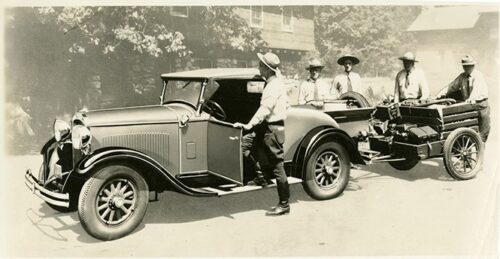
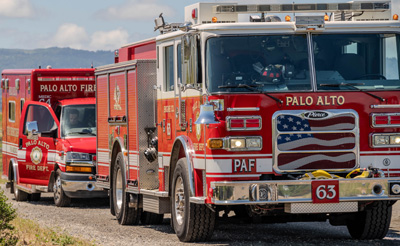
– – – – – – – – – – – – – – – – – – – – – – – – – – – – – – – – – – – – – – – – – – – – – – – – – – – – – – – – – –
(Depending on how accurately the satellite is sending you info), your smart-enough cell phone can be used to find compass directions, as well as altitude, latitude and longitude to better be able to read a topographical (hiking) map and tell where you are when away from places you are familiar with.
Find a compass, altitude, latitude and longitude on your cell phone here.
Knowing the elevation you attained on a hike and or climb can be fun for the been-there-and-done-that part of your adventure. Below, a photo taken of the compass app on a cell phone at Lake Solitude, in Cascade Canyon, Grand Teton National Park:
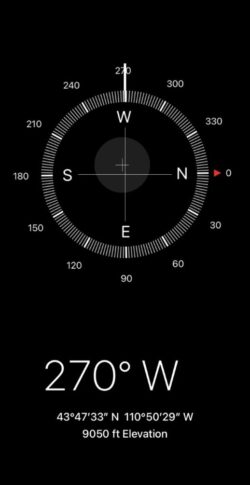
The 270 degrees W (west) shows the direction the cell phone was pointing, useful for orienting to a topographical (hiking) map or road map.
You can turn the map around to align with the direction you are looking towards, in this example above, the top end “north” of the map would be to your right hand side.
__________________________________
Cell phones in the wilderness has advice on how/when to use a cell phone to contact 911 in the wilderness and a warning about interference between cell phones, iPods and avalanche beacons.
And the warning:
Always state your location and cell phone number early in the call, in case connections fail and a callback is necessary.
__________________________________

“Emergency Communications Preparedness Center
Releases Considerations for Establishing Agreements for Next Generation 911”
“Across the nation, federal, state, local, tribal, and territorial (FSLTT) agencies are updating 911 systems to digital or Internet Protocol (IP)-based systems, known as Next Generation 911 (NG911). NG911 enables a dynamic and resilient means of sharing information between citizens and public safety agencies across all disciplines.. . .”
“The National Emergency Communications Plan (NECP) https://www.cisa.gov/necp is the Nation’s strategic plan to strengthen and enhance emergency communications capabilities. The NECP navigates the complex mission of maintaining and improving emergency communications capabilities for emergency responders and serves as the Nation’s roadmap for ensuring emergency communications interoperability at all levels of government. The NECP establishes a shared vision for emergency communications and assists those who plan for, coordinate, invest in, and use operable and interoperable communications for response and recovery operations. This includes traditional emergency responder disciplines and other partners from the whole community that share information during incidents and planned events.”
Read more details at:
https://www.cisa.gov/sites/default/files/video/22_1116_ecpc_federal911wg_mou_considerations_508c.pdf
“. . . Across the Nation, federal, state, local, territorial, and tribal (FSLTT) agencies are updating 911 systems to digital or Internet Protocol (IP)-based systems, known as NG911. NG911 enables a dynamic and resilient means of sharing information between citizens and public safety agencies across all disciplines. NG911 capabilities may include voice, data, and video communications. Collaboration across public safety agencies is critical to coordinate response efforts and provide greater situational awareness to promote first responder safety and protect citizens.. . “
“Public safety infrastructure is not immune to malicious intrusions and
must identify any existing flaws within their cybersecurity management.”

__________________________________
also perhaps of interest: Emergency Action Plan for a coach or swim instructor
Neighborhood Watch applied to swim centers
– – – – – – – – – – – – – – – – – – – – – – – – – – – – – – – – – – –
(Note to on-line users not in my classes: this is a study sheet. It is not complete instruction in first aid or the topic named in the webpage title.)
The author of this webpage, (written as a homework reading assignment for my students), does not give any warranty, expressed or implied, nor assume any legal liability or responsibility for the accuracy, completeness, or usefulness of any information, product, or process included in this website or at websites linked to or from it. Users of information from this website assume all liability arising from such use.
– – – – – – – – – – – – – – – – – – – – – – – – – – – – – – – – – – –

